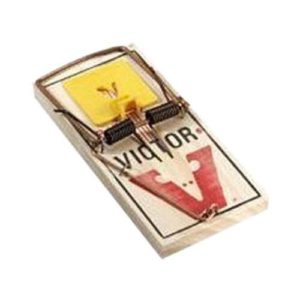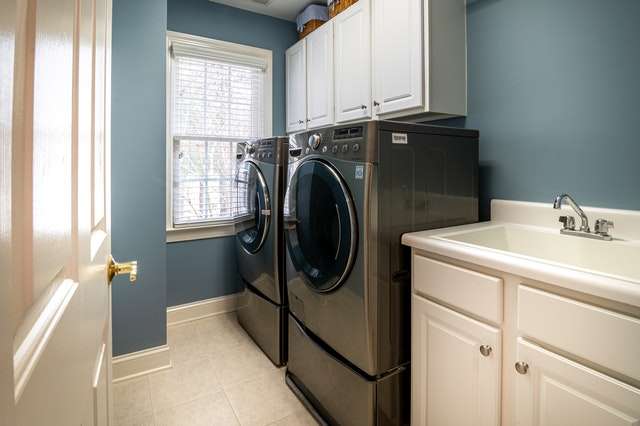Learn Tips for Rodent Proofing Your Home
Usually when a mouse enters a structure first it is an alpha mouse looking for some safe and warm lodging for its family. Alpha mice are very smart and are often the very last mouse to be caught.
After entering a structure, the alpha mouse often brings a mate and reproduces. The mate or the young juvenile mice are typically caught first.
Because the alpha mouse is cunning, you have to think like a mouse in order to catch it! Learn how to trap mice.
If you’re looking for quick, easy, and affordable Minneapolis mice control, give the experts at Done Right Pest Solutions a call at 651-342-9489. We perform hundreds and hundreds of mouse control services throughout the Twin Cities metro area and beyond and know what we’re doing. Look no further for Minneapolis mice control.
Read on to learn 6 ways on how to trap mice. Keep in mind that closing the entry points along the foundation is the most important step, and it’s something that should be done every fall in preparation for winter.
Table of Contents:
- Snap Traps
- Sticky Traps
- Humane Traps
- Over-the-counter Bait or Poison
- Noise Devices
- Peppermint Oil
- Areas to place devices
- Conclusion
- Next Steps
Snap Traps
You can purchase plastic or wooden snap traps, place some peanut butter or cheese as a bait and wait for the catch.
The snap trap is often effective, if you are willing to put in the work, trial and error of catching the mouse by snap trap.
Mice feel safest up against walls, so if you are using any of these traps, place them flush against the wall and you will have a higher chance of success.
Mice are very light. An adult mouse only weighs about 1 ounce. As a result, they can often lick the peanut butter or steal the cheese right off the platform without being caught.
To help increase your chance of success, spread the peanut butter or cheese (we would recommend a cheese spread or maybe a softer cheese you can smear) into the grooves of the snap trap bait placement.

Sometimes it can be difficult to learn how to catch mice.
Sticky Traps
You can purchase a package of sticky traps, which are thin sheets of hard cardboard with a glue substance on one side. Then, set the trap by peeling off the protective layer.
Sticky traps can be effective, though not in dirty, dusty, or moist conditions. They are also less effective in extreme hot or cold temperatures.
Juvenile mice are often caught by this trap. Be aware that these traps do not kill mice immediately. When caught by sticky traps, mice will squirm to try to get free and squeal for help.
It takes backbone to learn how to trap mice.
Humane Traps
You can purchase a box-like trap that allows you to release the mouse if you so choose. Otherwise they simply starve to death in this inescapable box.
Mice feel safe in closed in spaces, so these traps can be effective. Pest control companies are in the business to eradicate pests, and therefore cannot use catch-and-release methods.
If you choose this option, make sure your rodent proof the exterior of your home, to ensure that they simply don’t find their way back and enter again.
Over-the-counter Bait or Poison

Over-the-counter brands like D-Con or Tomcat have been useful to kill mice in homes. You can purchase these products without having a pest control license and place the bait around your home in secure locations.
If you’re going to go the bait route, we would recommend getting a professional pest control expert to exterminate this way, or at least obtain a commercial-grade product that isn’t going to cause the mice to leave blood behind or smell.
If you have pets, make sure to use bait or poison in a type of station or in a location where your pets can’t reach them.
Also make sure the secondary transfer is so low that pets or wildlife outside would not be harmed from eating a mouse that had consumed the bait or poison.
Mice are curious, but also cautious. It may take 1 to 2 days for the bait to attract the mice. Once the mice consume our bait, they go about their business.
It takes research to learn how to trap mice.
Noise Devices
Some folks purchase a type of device that emits a high pitched noise that mice can hear and do not like. Do not use this option if you have pets, as they can hear tones humans cannot.
These devices come in different shapes and sizes and you can hide them around your home.
We do not recommend these devices as they do not eradicate pest problems or potential pest problems, they simply mask them, but they may keep mice out of homes because mice don’t like the sounds these devices emit.
Peppermint Oil
Peppermint oil has been used to treat mice in homes.
This product is a repellent to mice: they don’t want to be near it. You can place peppermint oil around your home to repel mice, perhaps around the interior sill plate where mice would come in. Stop them in their tracks before they even get too far inside!
We do not recommend this option as it is a repellent only, but when coupled with rodent proofing your home, it can be effective. We are in the business to eradicate pests, not simply repel them.
Some Areas Where Snap Traps, Sticky Traps, Humane Traps, and Over-the-counter Poison or Bait Can Be Placed:
- Kitchen
- Behind the fridge or stove
- Under the sink
- Laundry room
- Behind a washer or dryer
- Along the edge of the wall where the mice may travel
- Near the laundry vent
- Furnace room
- On top of the sill plate
- Along the edge of the wall where mice may travel
- Hard to reach areas
- Attic
- Crawl space

Conclusion
Here you learned how to trap mice and where to place the trap options around your home. You’re on your way to ridding your home of mice! Read this post to learn more about closing the exterior entry points where mice get in homes.
Be aware that after closing the openings on the outside, it may feel like there is an increase in activity after performing your own mouse service or hiring our services. This is normal and a part of the process!
We also have an infographic that describes the process of performing your own mouse service. Check out our Complete Mouse Control Guide that has all this information and more!
Next Steps
However, if you don’t want to go to the hassle of buying and setting traps to catch your mice, give our experts a call today to learn more! 651-342-9489. Done Right Pest Solutions is your go-to company for all of your Minneapolis mice control needs!
We have inspections, one-time services, and year-round plans available for your needs whether you live in a town home, condo, single family home, duplex, or other housing structure.
Read more of our commercial plans or residential plans. Check out our rodent category within our blog.
Did you find this post helpful? If so, comment below. Have you used these methods before to trap mice? What was your favorite method? What worked for you? Let us know!
Want to learn more tips about keeping mice or other pests out of your home? Sign up for our newsletter!

